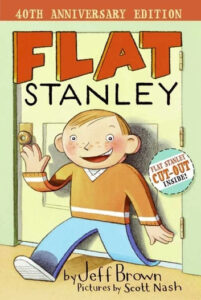This series of blogs and the release dates are as follows:
AUTISTIC SOLUTIONS RELATED TO TAKING IN INFORMATION
Part One: Using Words to Make Pictures (January 13, 2023)
Part Two: Using Words to Describe Pictures (February 10, 2023)
Part Three: When Feelings Are Too Big (March 10, 2023)
Part Four: Examples Using Paint Chip Visual Supports (April 7, 2023)
Part Five: Direct Instruction of Social Information (May 5, 2023)
We continue where we left off in the previous blog, AUTISTIC SOLUTIONS: Using Words to Make Pictures. Many students, even after they have been directly instructed on how to create pictures from the words they read and hear as described in the previous blog in this series, have difficulty using words to describe that picture now in their head. Here is an example from my clinical practice.
Pertinent Background: Franco, a fifth grader, often got frustrated because I did not understand what he was trying to tell me. I had to frequently remind him that I didn’t have the same picture in my head that he did. Therefore, I asked him to use words to recreate his picture for me. Even after explaining this several times Franco still did not understanding what I was asking him to do.
During this time Franco’s class was reading a mystery. He often commented favorably about mystery stories. Capitalizing on this, I told Franco about the mystery of Flat Stanley. This is a true story that happened at my house and it took several days to figure out. I challenged Franco to solve the mystery.
Strategy Implemented During Therapy Sessions: We began reading the book Flat Stanley (Brown, 2009). Stanley was a boy who became flat after a huge bulletin board fell on him. Each chapter of the book tells another of Stanley’s adventures such as being mailed in an envelope to visit a friend across the country and being tied to a kite string and having his brother fly him as a kite. The mystery involved my once upon a time kindergarten son bringing home his cut out shapes and declaring, “These shapes belong to Flat Stanley. Where are MY shapes?” Back then, it took me a long time to figure out what my son wanted and in the process I learned a lot about supporting his communication!
During each session Franco and I read another chapter of Flat Stanley, after which he would try to solve the mystery of what shapes belonged to my son. At the conclusion of the Flat Stanley book I brought in models of geometric solids such as a sphere, cube, cone, etc. i.e., shapes that were not flat! I showed Franco the answer to the mystery and invited him to make up words my little boy could have used to explain what the geometric solids looked like. Franco was readily able to use words to accurately describe each item.
We discussed how my son only saying a few words and then repeating them over and over didn’t give enough clues for someone to solve the mystery of what he wanted. Franco agreed to try to give more clues rather than to simply repeat his same few words when others didn’t understand what he was trying to tell them.
Follow Up: A few weeks later Franco asked me if I liked power wheels. I told him I didn’t know what power wheels were. He repeated his question and I repeated my response. Then I said, “This is like the Flat Stanley mystery. Please give me more clues.” Franco began by telling me exactly where in Walmart™ I would find the power wheels. I asked for another clue and he described what they looked like and said little kids drive them on the grass. Then, I knew what he meant as I had seen kids in miniature look alike cars driving around in their yards. Franco was happy I had figured it out, but I told him he was the one who make it possible by giving me clues until I could guess what power cars were.
Selection from: Autistically Thriving: Reading Comprehension,
ConversationalEngagement, and Living a Self-Determined Life
Based on Autistic Neurology, pg. 140-141.
(The next blog in this series, When Feelings Are Too Big, will discuss the idea of teaching the size of a feeling rather than the name of the feeling.)
Note: The author is a mental health therapist and is also autistic. She intentionally uses identity-first language (rather than person-first language), and invites the reader, if interested, to do further research on the preference of most autistic adults to refer to themselves using identity-first language.
If you are a clinician and interested in learning more about therapy with the autistic client please join me along with two of my colleagues in an online course.
CLICK HERE for additional information about Mental Health Therapy with the Autistic Client.
BY JUDY ENDOW
Endow, J. (2021). Executive Function Assessment. McFarland, WI: Judy Endow.
Endow, J. (2019). Autistically Thriving: Reading Comprehension, Conversational Engagement, and Living a Self-Determined Life Based on Autistic Neurology. Lancaster, PA: Judy Endow.
Endow, J. (2012). Learning the Hidden Curriculum: The Odyssey of One Autistic Adult. Shawnee Mission, KS: AAPC Publishing.
Endow, J. (2006). Making Lemonade: Hints for Autism’s Helpers. Cambridge, WI: CBR Press.
Endow, J. (2013). Painted Words: Aspects of Autism Translated. Cambridge, WI: CBR Press.
Endow, J. (2009b). Paper Words: Discovering and Living With My Autism. Shawnee Mission, KS: AAPC Publishing.
Endow, J. (2009a). Outsmarting Explosive Behavior: A Visual System of Support and Intervention for Individuals With Autism Spectrum Disorders. Shawnee Mission, KS: AAPC Publishing.
Endow, J. (2010). Practical Solutions for Stabilizing Students With Classic Autism to Be Ready to Learn: Getting to Go. Shawnee Mission, KS: AAPC Publishing.
Myles, B. S., Endow, J., & Mayfield, M. (2013). The Hidden Curriculum of Getting and Keeping a Job: Navigating the Social Landscape of Employment. Shawnee Mission, KS: AAPC Publishing.
REFERENCE
Brown, J. (2009 – present). Flat Stanley. Wilkinsburg, Pennsylvania: Scholastic Publishing Corporation.

